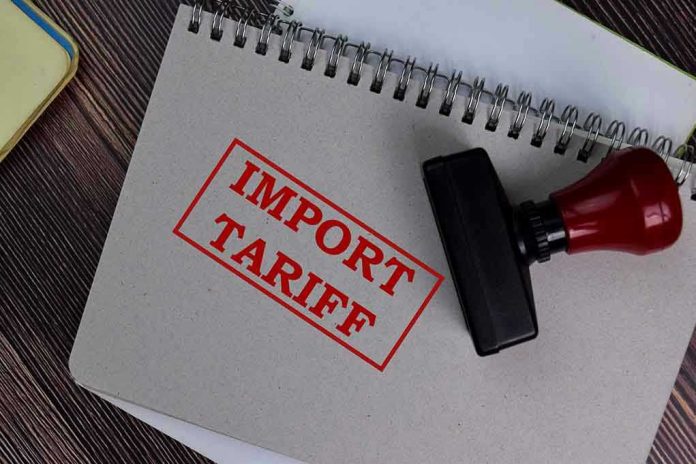
America’s Treasury coffers are swelling with over $200 billion in tariff revenue this year alone, turning Trump’s controversial trade weapon into one of the federal government’s most lucrative income streams.
Story Highlights
- U.S. tariff revenue reached $214.9 billion through September 2025, with $31.3 billion collected in September alone
- August and September delivered back-to-back record highs, generating $62.6 billion in just two months
- Supreme Court will hear arguments on tariff legality in November 2025, potentially reshaping trade policy
- Revenue has surged from $17.4 billion in April to over $31 billion monthly by late summer
Revenue Records Shatter Expectations
The numbers tell a compelling story that cuts through political rhetoric. September’s $31.3 billion collection followed August’s record-breaking $31.4 billion, creating an unprecedented two-month haul of $62.6 billion. This dramatic surge represents more than just accounting entries—it demonstrates how Trump’s tariff strategy has evolved into a financial juggernaut that continues generating substantial federal revenue years after implementation.
The trajectory from April’s $17.4 billion to September’s towering figures reveals a tariff system hitting its stride. May brought $23.9 billion, June reached $28 billion, and July totaled $29 billion before the explosive August-September performance. This consistent upward trend suggests businesses are increasingly engaging with tariffed goods despite higher costs, indicating robust underlying economic activity.
Legal Challenges Threaten Revenue Stream
The Supreme Court’s upcoming November hearing introduces uncertainty into this revenue bonanza. Legal challenges question the constitutional authority behind Trump’s tariff implementation, potentially threatening billions in future collections. The Court’s decision could either validate this revenue mechanism or force significant policy restructuring, making this case one of the most economically consequential in recent memory.
Critics argue these tariffs function as hidden taxes on American consumers, while supporters emphasize their role in protecting domestic industries and generating substantial government revenue. The legal proceedings will determine whether this $200+ billion revenue stream continues flowing or faces dramatic curtailment, affecting everything from federal budgeting to international trade relationships.
Economic Impact Beyond Revenue Numbers
American businesses navigate this tariff landscape by making complex calculations about cost absorption versus price increases. Many companies initially absorbed tariff costs to maintain market share, but sustained high collections suggest these costs increasingly pass through to consumers. This dynamic creates inflationary pressure while simultaneously boosting federal revenues, presenting policymakers with competing economic considerations.
The global trade implications extend far beyond Treasury receipts. Trading partners respond with retaliatory measures, creating complex economic webs that affect American exporters and international relationships. Yet the undeniable revenue success provides ammunition for tariff advocates who argue these policies deliver tangible benefits to federal finances while encouraging domestic production and reducing trade deficits.
Sources:
Fox Business – Back-to-back highs: August, September bring $62.6B in tariff revenue
Peterson Institute for International Economics – Trump’s tariff revenue tracker
Bipartisan Policy Center – Tariff Tracker
JPMorgan – US Tariffs Insights
Congressional Budget Office – Tariff Analysis










